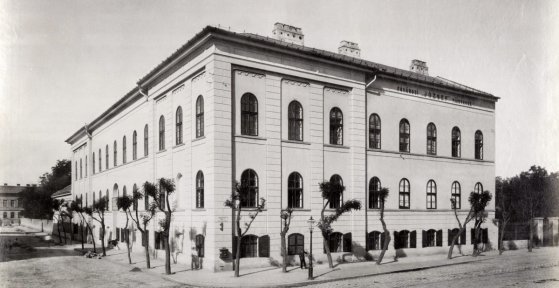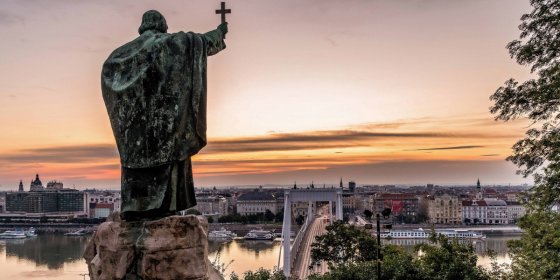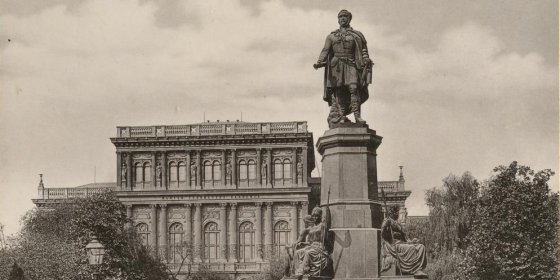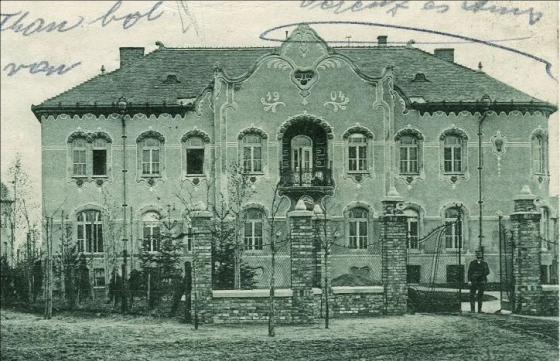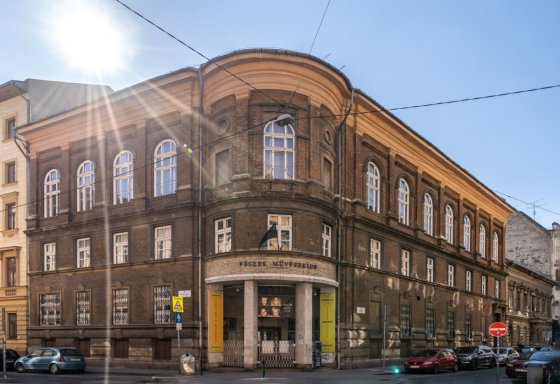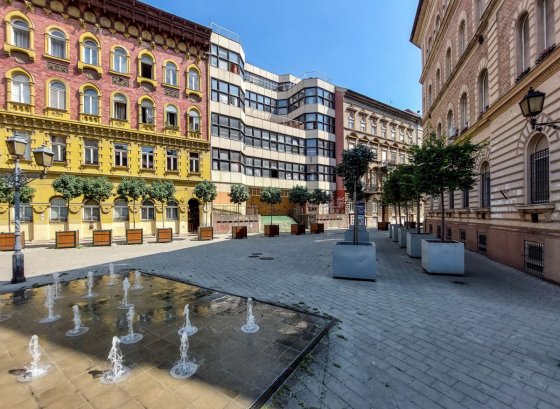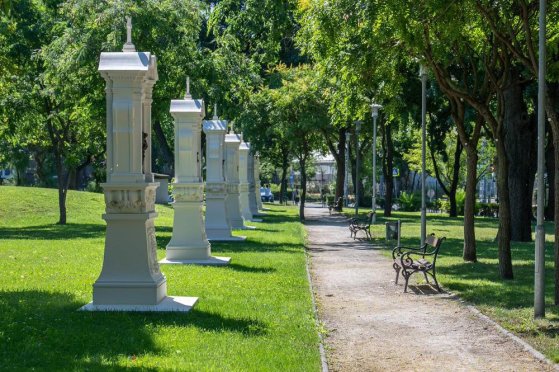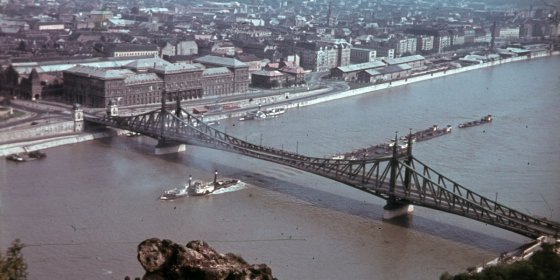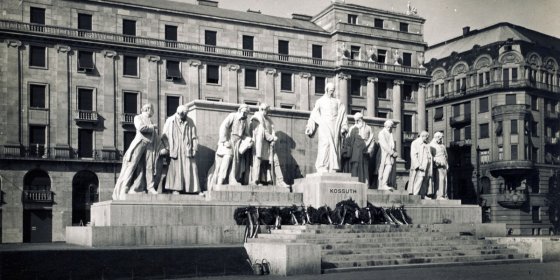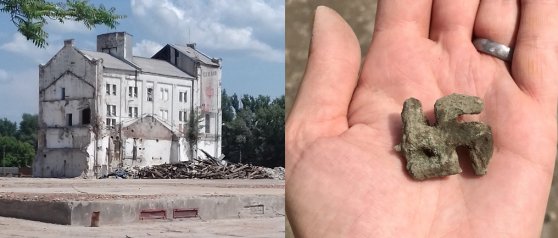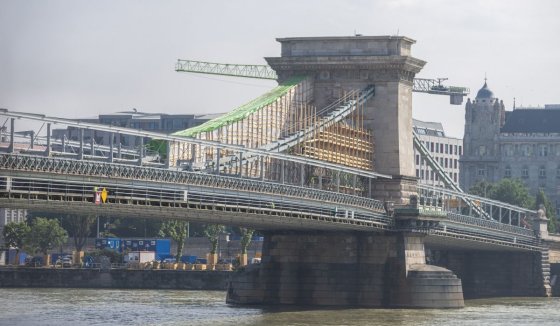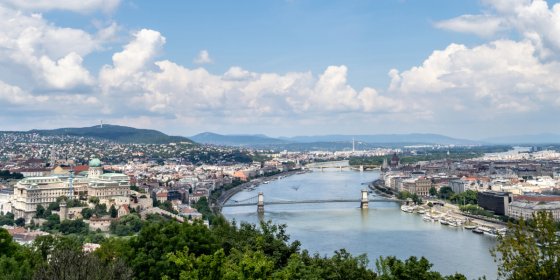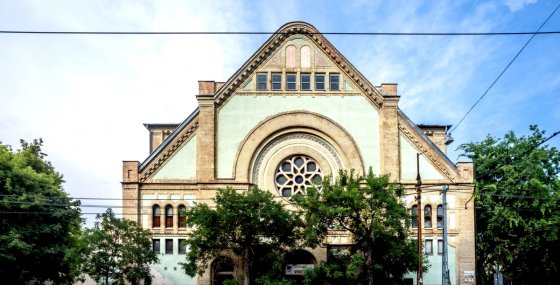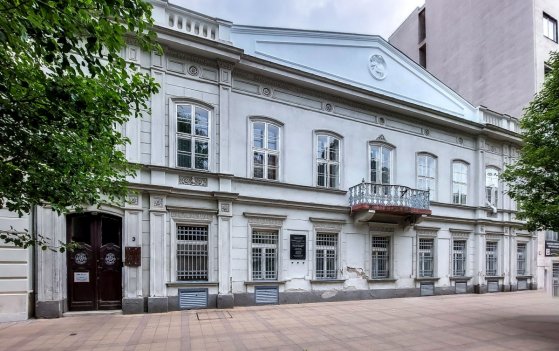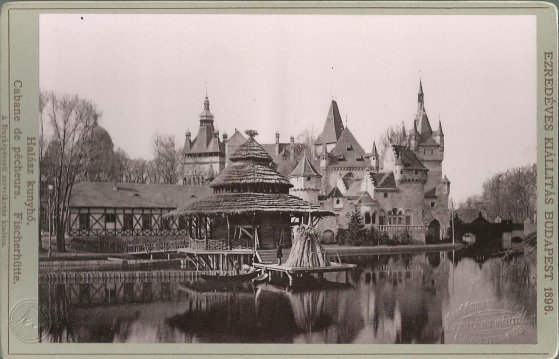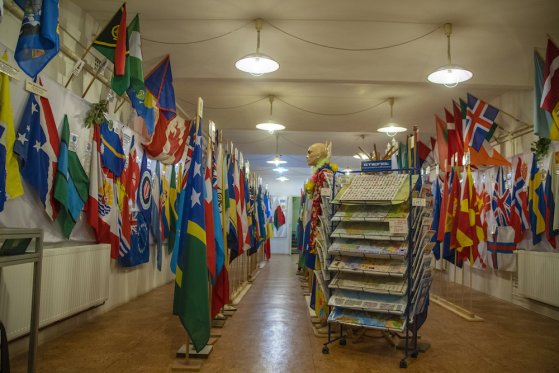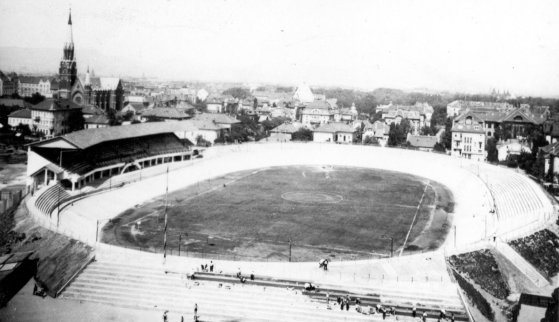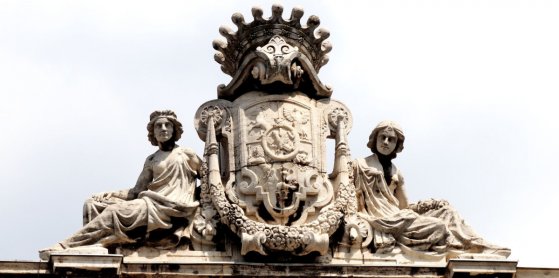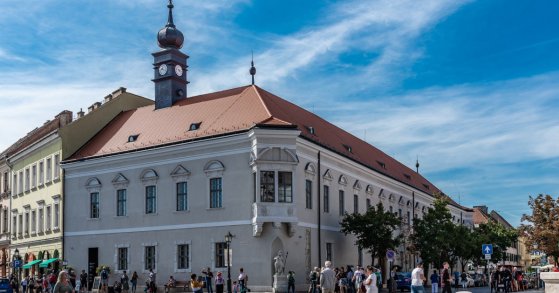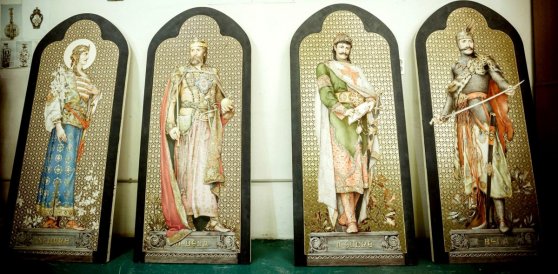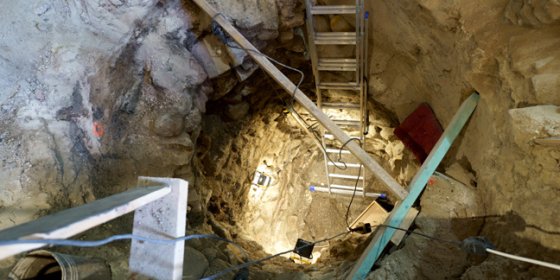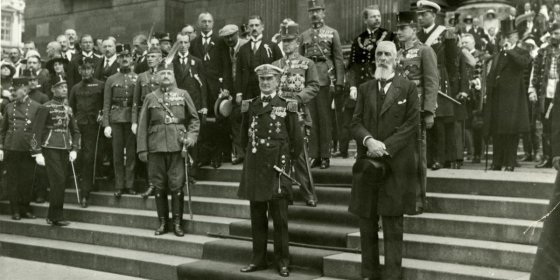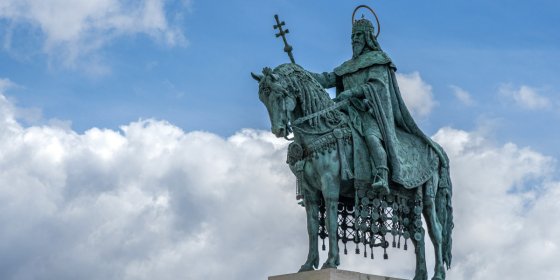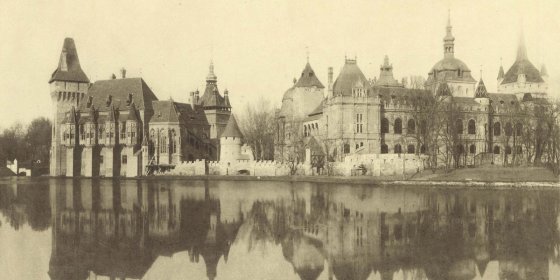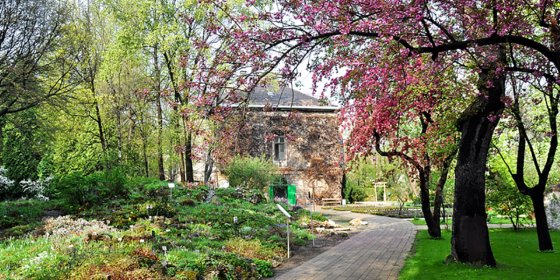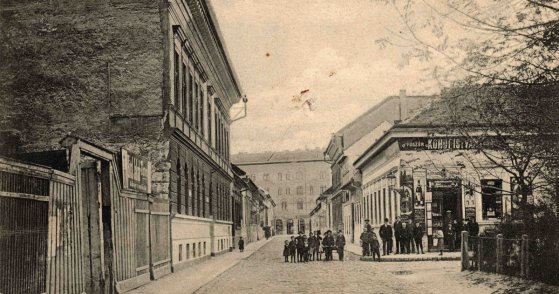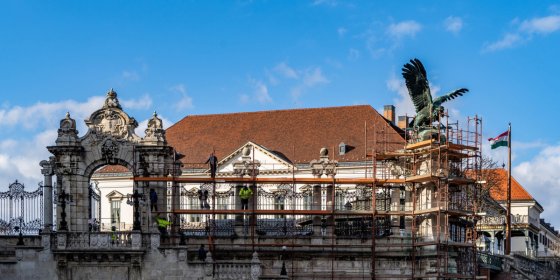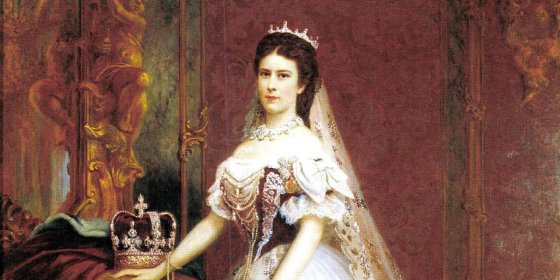 The „intertwined history” of the bridges and the city of Budapest
Which ideas and events have shaped the fate of bridges of Budapest and the cityscape? Alongside many other interesting facts, this question is also answered this newly published book by the Budapest City Archives, which introduces the history of bridges in Budapest.
The „intertwined history” of the bridges and the city of Budapest
Which ideas and events have shaped the fate of bridges of Budapest and the cityscape? Alongside many other interesting facts, this question is also answered this newly published book by the Budapest City Archives, which introduces the history of bridges in Budapest.
Heritage
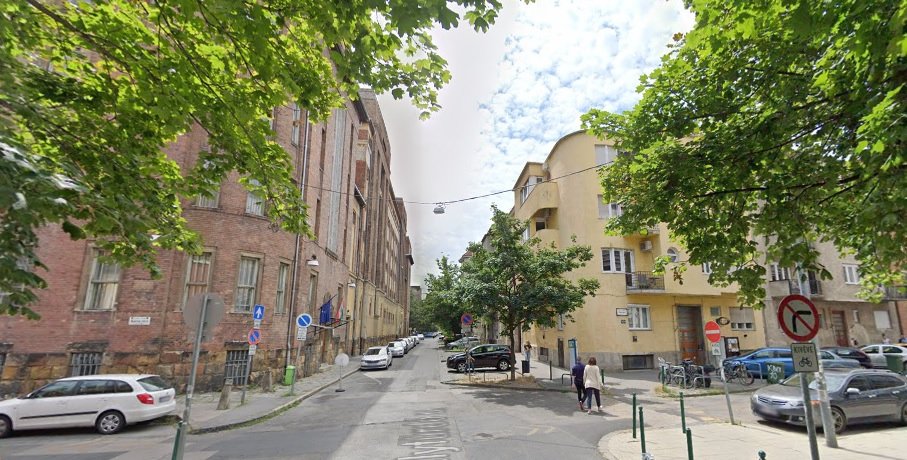 Gyorskocsi Street in Buda preserves the name of a special means of transport
Gyorskocsi Street in Buda preserves the name of a special means of transport
October 13, 2021 at 10:00 AM
Gyorskocsi Street in Buda preserves the history of the means of transport used in the 18th-19th century, before the spread of the railway, which made it possible to get from Buda to Vienna and back in the shortest time. But what was that particular gyorskocsi [diligence or stagecoach] like, who travelled by it, and how long did the trip take? You can read about that here.
Once upon a time there was a boy's orphanage - Josephinum designed by Mihály Pollack got its name from Palatine Joseph¬
October 10, 2021 at 10:00 AM
The support and upbringing of young children who lost their parents, and the satisfaction of their daily needs in Hungary until the middle of the 18th century was undertaken by the churches. The first city orphanage opened in Kőszeg in 1741, and then in the following decades similar institutions maintained and operated by the settlements were built in Selmecbánya [today Banská Štiavnica], Sopron, Nagyszombat [today Trnava] and Veszprém. In Pest, although prominent citizens donated significant sums for this purpose in the 1790s, only 100 years after the opening of the one in Kőszeg was the foundation stone of the first educational institution of this type laid, and it named after Palatine Joseph.
From whom Gellért Hill was named: the educator of prince Emeric died a martyr's death 975 years ago
September 24, 2021 at 9:03 AM
The name and legend of Saint Gellért is known not only to the Hungarians, but certainly to the tourists visiting here. If for no other reason, because the Gellért Hill statue of the first martyr of Christian Hungary is an integral part of the Budapest cityscape; the bishop has been holding the cross high above the capital for more than a hundred and ten years. The memory of Bishop Gellért, who died a martyr's death in 975 years, is preserved not only on the mountain, but also in many other works in the capital.
Stations of a Life - The memory of István Széchenyi, born 230 years ago, in the square named after him
September 21, 2021 at 9:00 AM
The year 2021 can also be called the Széchenyi Year, as Hungarians celebrate the 230th anniversary of the count's birth on 21 September. In addition, there is a square in Pest that had been named after the biggest Hungarian for 10 years, and most of its corners are related to a certain stage of the count's life or patriotic deeds. It is the square at the Pest end of the Chain Bridge, which István Széchenyi may have known as Kirakodó Square.
Monument research on the Art Nouveau hospital building
September 10, 2021 at 9:30 AM
Most of the people living in the area still mention the North Pest Hospital as a former Russian hospital, whose buildings are located in Pestújhely, on a landscaped area of more than 7 hectares. The institution was originally built as a mental hospital in the Art Nouveau style. The plans for the renovation of the institution and the monument research were recently carried out by the owner, the 15th District Local Council.
The famous Fészek Klub opened 120 years ago
September 7, 2021 at 9:00 AM
The Festők, Építészek, Szobrászok, Zenészek, Énekesek és Komédiások Klubja [Painters, Architects, Sculptors, Musicians, Singers and Comedians Club] or the Fészek Klub opened 120 years ago, on 7 September 1901, on the corner of Kertész Street and Dob Street. The legendary club has been a popular and beloved meeting place for the arts scene for decades, but is now more of an events venue. Just like the club scene of the old days, the original elegant Art Nouveau building and its lavish décor are a thing of the past.
The Memorial Stone of Heroes was torn down 70 years ago
August 26, 2021 at 11:00 AM
In the shadow of the Millennium Monument, another work is hidden in the Heroes' Square. The Memorial Stone of Heroes symbolises a mass grave, originally erected in 1929, in memory of the soldiers of the First World War resting in anonymous graves, but it was not mourning that was its primary message, but mobilisation against the changing millennial boundaries. The memorial stone was demolished in 1951 but re-erected in the spring of 1956 and then in 2001, in a different form and with new messages.
The tumultuous fate of the small Pompidou in Pest - The former building of the Almássy Square Leisure Center is transformed into a hotel
August 24, 2021 at 9:00 AM
The Almássy Square Leisure Center has been sleeping its (second) Sleeping Beauty dream for almost a decade. The former popular cultural institution was sold by the municipality of Erzsébetváros in 2007 and although the hotel building plans at the time did not materialize, an application for a building permit was recently submitted to expand and transform the building, 35 years ago known as the small Pompidou in Pest, to a hotel.
The stations of Golgota Square were erected
August 23, 2021 at 3:30 PM
The rebirth and re-creation of a lost, destroyed monument is always a joy for the community. Especially when it comes to a work of special significance, such as the Calvary in Golgota Square in Józsefváros, which was demolished in 1971. The 14 stations are now visible again in their original beauty.
It was rebuilt, but its decoration and name were changed - the Liberty Bridge was handed over 75 years ago
August 23, 2021 at 9:30 AM
At the end of the spectacular fireworks held in Budapest on the occasion of the founding of the state, glowing Greek fires were started on the bridges, including the Liberty Bridge. At that moment, surely few thought it was the first bridge to be rebuilt after the devastation of World War II and handed over to traffic on 20 August 1946.
The migration of the Kossuth statue in front of the Parliament - They wanted to erect the monumental memorial opposite the main entrance of the Parliament
August 22, 2021 at 11:00 AM
The square in front of the Parliament has been called Kossuth Square since 1927, since the statue of the great statesman was inaugurated that year. The designation of its exact location provoked lengthy debates, and the finished work was tentatively erected at several points of the square by the time it reached its final location.
An ancient swastika was found on the grounds of Buszesz
August 3, 2021 at 5:00 PM
The excavation work has entered a new stage in the area of the former distillery in Óbuda, the archaeologists of the Budapest History Museum found Roman coins, a crescent-shaped military mounting made of bronze, and a bronze clothespin depicting a swastika.
The Chain Bridge will be lighter after the renovation - the new deck plates are already being manufactured
July 23, 2021 at 1:00 PM
Instead of the old reinforced concrete, steel deck plates will be placed on the Chain Bridge during the renovation. The 94 new steel deck slabs will better fit the structure of the bridge and will also significantly reduce the overall weight of the crossing.
Budapest has not been included in the list of endangered World Heritage sites
July 22, 2021 at 6:00 PM
According to a UNESCO decision today, the capital’s World Heritage sites are not in danger.
There is a fencing room in the synagogue in Angyalföld
July 21, 2021 at 11:00 AM
After the Second World War, many synagogues were left without congregations in Hungary. Ecclesiastical buildings left empty in several parts of the country were either demolished and their building materials used to renovate, rebuild other buildings, or were given other functions. The building of the synagogue on Dózsa György Road has not been demolished, it is still in communal use today - but differently than before.
Teleki Blanka opened the first school for girls in Pest in a building on Szabadság Square that still stands today
July 16, 2021 at 9:00 AM
A peculiar twist of fate is that Blanka Teleki opened the first education institution for girls in Pest next to the Újépület ('new building') in Lipótváros, that served as a military barracks, which became her prison in 1851, because according to the imperial authorities the 1848 revolution started from her educational institution. The building, which still stands on the former Promenade, later housed a bank, then the economic police of the Ministry of the Interior, and today the headquarters of the Catholic Camp Bishopric.
Renowned photographers of the era captured the National Millennium Exhibition in the City Park 125 years ago
July 14, 2021 at 9:30 AM
The National Millennium Exhibition in City Park, opened in 1896, is a unique event to this day. The capital has not hosted such a large-scale exhibition since then, which also presents the history, economy, industry, and ethnography of the nation. Thanks to the photographs taken by the famous photographers of the period, György Klösz and Antal Weinwurm, people can still marvel at the beautiful pavilions built for this event, the ethnographic village, the restaurants and the festive atmosphere.
The unique collection of the Flag Museum will be on display again
July 2, 2021 at 4:30 PM
The Hungarian Museum of Trade and Tourism hosts the Flag Museum, which has been operating in Józsefváros since 1995. In the spring, the local council decided not to support the institution, which closed in the room on the corner of József körút - Nap utca. After scientific processing, the collection will be re-presented to those interested in temporary exhibitions.
The first Hungarian international football match was played at the Millenáris in Zugló - The field called the cradle of Hungarian sports is 125 years old
June 30, 2021 at 4:00 PM
Today, when it comes to the Millenáris everyone thinks of the popular Buda park, although the Pest side also has its own Millenáris. The Millenáris in Zugló, which is the first sports field in Budapest, has been operating for 125 years, and many also refer to it as the cradle of Hungarian competitive sports. The tilted winding cycling track, the velodrome, was already one of the most modern tracks of its time when it was built, after its reconstruction in 1927, tens of thousand supporters flooded the grandstand during the world championship organized here. The first public international football match in Hungary was held here.
Lion, sparrowhawk, crane – Ancient symbols from coats of arms tell the story of the past of noble families in the Magnates' Quarter
June 17, 2021 at 9:30 AM
Although in 1947, the communist regime banned the use of noble forenames and badges, including private coats of arms, fortunately, these were not removed from the former aristocratic palaces. Ancient symbols, often dating back centuries, referred to the owner's family, their role in Hungarian history and also served aesthetic purposes on the buildings. In the second half of the 19th century, the Hungarian aristocracy enjoyed building around the National Museum, so several buildings with family coats of arms and their motifs can be found in the quarter. These can be seen in the palaces of the Festetics and Károlyi families in Pollack Mihály Square.
The bricklayer building the Town Hall of Buda appears on the Holy Trinity Column
June 15, 2021 at 9:30 AM
Most of the encyclopaedias only describe the life of builder János Hölbling from Buda briefly, although, after the siege of 1686, he took an active part in the reconstruction of the city and the construction of the former Buda Town Hall is also connected to his name. He was such a respected professional in his day that his figure even appears on the Holy Trinity Column in Holy Trinity Square (Szentháromság). The builder of Buda died 285 years ago.
Painter of saints and kings – Twelve works by Ignác Roskovics adorned Saint Stephen's Hall
June 14, 2021 at 9:00 AM
Ignác Roskovics was one of the popular painters of the last decades of the 19th century and the turn of the century. Among the ecclesiastical and historical works that define his oeuvre, the twelve paintings made for the St. Stephen's Hall in Buda Castle stand out, based on which ceramic paintings were made in the Zsolnay factory. The works, ten of which depict the most important kings and saints of the House of Árpád, and two depict scenes from the life of St. Stephen, will be on display again from 20 August in the recreated St. Stephen's Hall.
Intact utensils found in a medieval well excavated under the National Guard Headquarters
June 12, 2021 at 3:30 PM
The everyday life of the former inhabitants of Buda Castle can be studied through the objects, especially the ceramic jugs and glasses, which were found during archaeological research in the area of Dísz Square – Szent György Square, on the basement level of the Honvéd ('national guard') Headquarters. Most of the finds were hidden in the depths of an identified well.
A square took his name before his death – Albert Apponyi was born 175 years ago
May 29, 2021 at 3:00 PM
One of the important squares of Budapest was named after him during his lifetime. One hundred years ago, he was a hero celebrated by the whole country, on whose birthday the people of the capital filled the streets. The nation's lawyer, Albert Apponyi, born 175 years ago. He earned his title with his famous speech in the negotiations leading up to the Treaty of Trianon. Although he was considered one of Hungary's greatest statesman in his life and after his death, communism tried to make people forget him after the war. Not much is reminiscent of the once-respected politician in the Hungarian capital today.
The first statue of Saint Stephen in Budapest was completed in 1906
May 25, 2021 at 10:00 AM
The statue of Saint Stephen has been standing in Buda Castle next to the Fisherman's Bastion for 115 years. Although the founding king of Hungary has always been highly respected in the country, the great work of Alajos Strobl was completed slowly. The first statue of King Stephen in Budapest was inaugurated in 1906 next to Matthias Church almost 40 years after it was first planned.
Celebrating the millennial past of the Hungarian nation
May 1, 2021 at 4:00 PM
The central event of the millennium celebrations of 1896, held on the anniversary of the Hungarian Conquest of the Carpathian Basin, was the National Millennium Exhibition held in City Park. The exhibition, which was open for half a year, offered insight into the past of Hungarians and provided an opportunity to present the results achieved during the extraordinary economic development after the Austro-Hungarian Compromise.
The home of 5 lakes - Ten interesting pictures of the 250-year-old Füvészkert
April 26, 2021 at 9:00 AM
It has been operating in its current location for 174 years, its oldest trees, the fern pines, have lived through 200 springs, and its fairy roses were admired by members of the royal family. In its area, which once was the park of Festetics Palace, there were once 5 lakes, and its glasshouse was known to generations from The Paul Street Boys. Take an imaginary walk in the 250-year-old Füvészkert (ELTE Botanical Garden; 'herb garden') with ten carefully selected pictures.
No place to call home – József Attila's family moved every six months
April 19, 2021 at 10:00 AM
Ferencváros, including Ferenc Square, was where one of the greatest figures of Hungarian poetry, Attila József, lived from his birth until the age of 14. His father, Áron József, abandoned the family in 1908, when the youngest child, Attila, was three years old. Despite having moved a lot before, his mother, Borbála Pőcze, was forced to find a new home almost every six months due to being behind on their rent.
Restoration of Habsburg Gate and Turul statue in Buda Castle has begun
February 19, 2021 at 9:00 AM
The ornate gate built during the Hauszmann-reconstruction of Buda castle stands at the Szent György Square station of the Buda Castle Funicular. The ornate fence, stairs, and the adjoined great Turul statue – erected in 1905 – are being restored.
Refuge for a Queen – Queen Consort Elizabeth's love for Buda Castle
February 13, 2021 at 10:00 AM
The story of how Franz Joseph's beautiful wife went from being unknown in Hungary to become "our Queen consort", often referred to simply as Sisi, is fascinating. The Queen learnt Hungarian, was happier in Buda than Vienna, and her death shook the entire nation. Her friendship with Gyula Andrássy is well-known, and it was in part her efforts that transformed Franz Joseph (Ferenc József), the cruel oppressor, to the diminutive Ferenc Jóska.
More articles
 The „intertwined history” of the bridges and the city of Budapest
Which ideas and events have shaped the fate of bridges of Budapest and the cityscape? Alongside many other interesting facts, this question is also answered this newly published book by the Budapest City Archives, which introduces the history of bridges in Budapest.
The „intertwined history” of the bridges and the city of Budapest
Which ideas and events have shaped the fate of bridges of Budapest and the cityscape? Alongside many other interesting facts, this question is also answered this newly published book by the Budapest City Archives, which introduces the history of bridges in Budapest.
 The Bridge Report, which brought a turning point in the history of Budapest
A travel report that changed the history of Pest and Buda, as well as Hungary. The little book contributed to the change of half a thousand years of legal customs and the implementation of an investment of unprecedented size and technical quality. This book was The Bridge Report [Hídjelentés in Hungarian].
The Bridge Report, which brought a turning point in the history of Budapest
A travel report that changed the history of Pest and Buda, as well as Hungary. The little book contributed to the change of half a thousand years of legal customs and the implementation of an investment of unprecedented size and technical quality. This book was The Bridge Report [Hídjelentés in Hungarian].
 Drama on the university wall - The heroic monument was planned 95 years ago
In the constant hustle and bustle of the Egyetem Square in Pest, the students may not even notice the monument that decorates the short section of wall between the church and the central building of ELTE. However, it commemorates their predecessors, the heroes who fought for their country in World War I, and those who heroically helped them. The first design of the dramatically collapsing soldier was born in 1928, ninety-five years ago.
Drama on the university wall - The heroic monument was planned 95 years ago
In the constant hustle and bustle of the Egyetem Square in Pest, the students may not even notice the monument that decorates the short section of wall between the church and the central building of ELTE. However, it commemorates their predecessors, the heroes who fought for their country in World War I, and those who heroically helped them. The first design of the dramatically collapsing soldier was born in 1928, ninety-five years ago.

